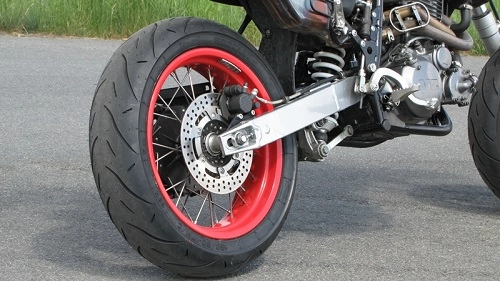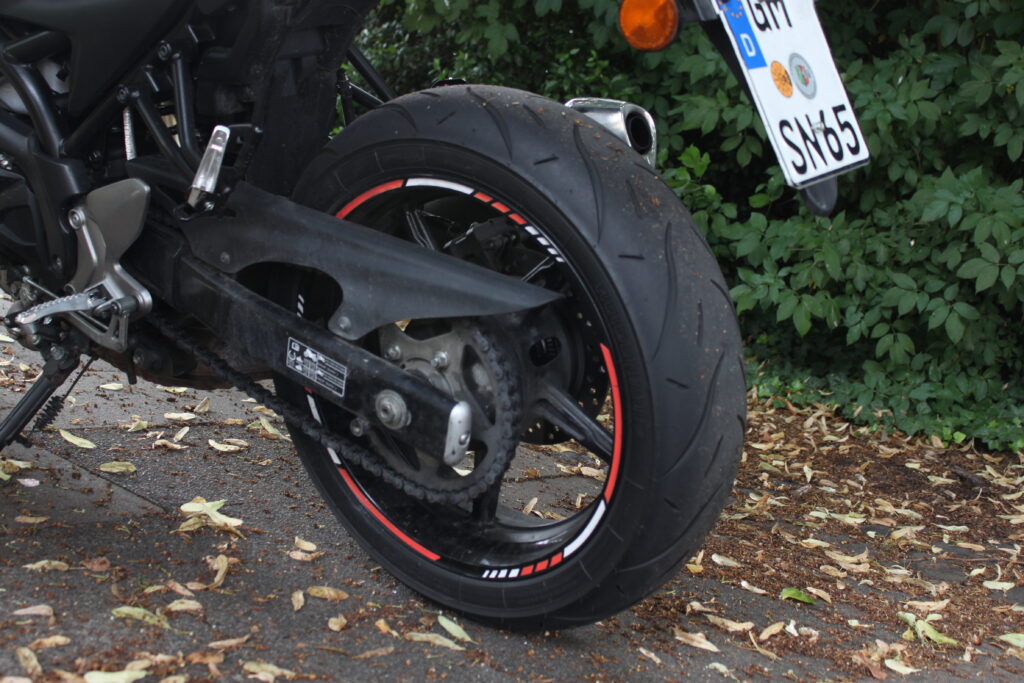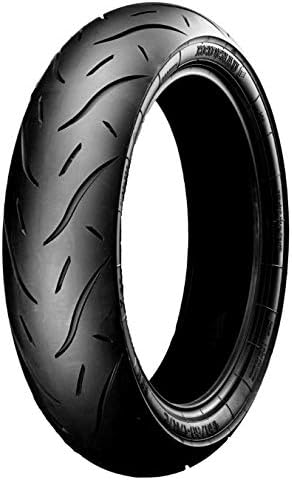The Heidenau K80 Tires: An Up-Close Review
In the vast world of motorcycle tires, the Heidenau K80 stands out as a noteworthy contender. As someone who has personally invested in these tires, I felt the need to share my firsthand experience and offer fellow riders an up-close look at what these tires are all about.
Before delving into the details, a brief introduction is in order. The Heidenau K80 tires, which I procured for approximately $150, have their origins in Germany.
This was a key factor in my decision to purchase them, as I had a particular inclination towards German-made products.
Heidenau K80 Specifications
For the tech enthusiasts among you, the Heidenau K80 I purchased are sized at 120/70-12. To put it simply, these are twelve-inch tires. In my quest for these tires, I relied on the expertise of the team at RevZilla. Their customer service was commendable. I could easily get in touch with their representatives, who were fluent in English and extremely helpful throughout the purchase process.
An Important Note on Inspection
Now, while the overall experience was positive, I’d like to emphasize the importance of careful inspection upon receiving any product, tires included. In my case, I discovered a deep cut on the sidewall of one of the tires. The cut was deep enough to expose the cords beneath. Though the exact cause of this damage remains uncertain – it might have occurred during packaging, shipping, or even before – the lesson to be gleaned is clear. Always inspect your purchases meticulously upon arrival.
One could speculate on how this damage occurred. Perhaps a previous buyer inadvertently slashed the tire with a knife while trying to remove the packaging strap and subsequently returned it. But regardless of the origin of the damage, the importance of thorough inspection cannot be overstated.
Key Takeaways and Features
Despite the unforeseen hiccup with the cut, the Heidenau K80 tires boast several impressive features. Their German craftsmanship is evident in their design and build. Moreover, the customer service provided by RevZilla adds another layer of assurance for potential buyers. However, as always, it’s vital to keep an eye out for any discrepancies or damages to ensure you’re getting the best value for your investment.
RevZilla’s Outstanding Customer Service
Upon discovering the damage on my Heidenau K80 tire, I immediately contacted RevZilla. Their swift response was commendable. They arranged for a prepaid UPS return, ensuring that the issue would be rectified without any additional hassle or expense on my part. My experience with them emphasizes the importance of buying from reputable dealers who stand behind their products and prioritize customer satisfaction. Today, I’ll be carefully removing these straps with scissors to avoid causing any further damage, reminiscent of what might have been done by a careless individual with a machete in the past.
The Heidenau K80 Tires: A Closer Look
The Heidenau K80 SRS is more than just a tire; it represents German precision and reliability. A key feature to note is its maximum load capacity, which is particularly significant for riders like me. I own a Piaggio Fly 150 scooter, which, contrary to misconceptions about scooters, isn’t a lightweight 50cc machine. This scooter, I believe from around 2006, requires tires that can handle the weight of a more robust scooter, making the K80 SRS an excellent choice. Regardless of the year of manufacture, be it 2007, 2008, or 2009, the model specifications remain largely consistent, necessitating durable and reliable tires.
Comparing Old and New
Now, every rider has their reasons for upgrading or replacing parts, and in my case, it was the tires. The scooter originally came with Pirelli SL 26 tires. A cursory glance might suggest that there’s still some tread left on these tires. However, delving deeper revealed that these were the original tires from way back, manufactured in the 14th week of 2005, as indicated by the production date on them.
But why replace seemingly decent tires? Well, time takes its toll. Despite the tread, the tires showed signs of wear and aging, evident from the cracking on the sidewalls. Riding a Piaggio Fly 150, which can easily reach speeds over 70 miles per hour, with worn-out tires is a significant safety risk. Given my weight of around 160 pounds, I can push my scooter to speeds of up to 73 miles per hour. At such velocities, the centrifugal force causes the tire to expand. With aged tires, this can lead to potential blowouts, a hazard every rider wants to avoid at all costs, given the dire consequences.
Each rider’s journey and experience differ, but the essence remains the same: safety, performance, and the joy of the ride.
Through articles like this, I hope to offer a real person’s perspective on products, helping fellow riders make informed decisions.
The Quest for Authenticity: Pirelli’s Legacy
I’ve always been fond of Pirelli tires, primarily because of their rich history and legacy in tire manufacturing since the 1800s. As a proud owner of an Italian scooter, I naturally gravitated towards having Italian rubber on it. I hoped to find a Pirelli tire made in Italy to align with the authenticity of my scooter. To my disappointment, a closer look at the tire revealed it’s made in Brazil. While there’s nothing inherently wrong with Brazilian-made products, it wasn’t what I was aiming for in terms of authenticity.
Exploring Other Pirelli Options
In my quest to try something new, I came across another variant of Pirelli, the SL 36, on eBay. This was a departure from my original Pirelli SL 26. Although it seemed promising, the speed setting of 51 alpha, according to my research, meant that the tire could only handle speeds up to 75 miles per hour. Beyond this, the tire could be prone to blowouts. Furthermore, just like the SL 26, the SL 36 was also made in Brazil. Hence, I decided to return it.
Diving into Heidenau K80
After my adventures with Pirelli, I settled on the Heidenau K80 SRS. As someone who’s keen on details, the bead setting of the K80 caught my attention, rated at 58. There’s information floating around suggesting this tire can handle speeds up to 205 miles per hour, though I remain slightly skeptical. One thing that often gets overlooked when shopping online is the actual appearance and details of the tire. Stock photos don’t always do justice, so here’s a closer look: the tread, the inside, the meticulous design – it’s all there for you to see. And to emphasize authenticity, these Heidenau tires are German-made, tailored for my Piaggio Fly 150 scooter.
Performance Over Aesthetics
Before wrapping things up, it’s essential to address a particular feature I wasn’t particularly keen on – water channeling. While many riders appreciate tires that can effectively channel water, making wet rides safer, I hardly find myself riding in wet conditions. Hence, I wasn’t interested in this feature. This is why I opted for the K80s and not the K61s, which are designed for racing and offer superior water channeling capabilities.
However, there’s a trade-off in tire selection: Heidenau tires are believed to last longer, whereas Pirellis, despite wearing out quicker, are known for better grip. It eventually boils down to individual preferences and priorities as a rider.
Choosing Between Pirelli and Heidenau K80
When faced with the choice between Pirelli and Heidenau K80, it’s natural to gravitate towards Pirellis. After all, they are the original tires that accompanied my Piaggio. There’s an undeniable allure to having a tire with superior grip. Yet, as I’ve come to learn, sometimes priorities shift. While grip is synonymous with safety, my recent experiences have made me value longevity and durability more. The complex world of tire codes can be baffling, but one thing is clear: if the Heidenau K80 promises a longer lifespan, then that aligns more closely with my current priorities.
Cost plays a significant role in this decision-making process. Investing around $150 in a pair of tires is not a trivial matter. Quality and origin are paramount considerations for me. While I have reservations about tires made in certain countries, my preference leans towards those manufactured in Germany, Italy, or the United States, where I reside. Other European origins like France are also favorable in my books.
Considering the Cost of Tire Replacement
Speaking of finances, the cost of these tires stood at approximately $150 for the pair. My recent conversation with the authorized Piaggio repair center brought another expense to light. Since I had already removed the wheels, all that remained was to get the new tires mounted. However, the price quote for this service – a whopping $155 before tax – caught me off guard. This fee includes fitting the tires onto the rims, balancing, and adding new valve stems. Living in Illinois, especially the Chicagoland area, often comes with its set of hefty prices. And while the total cost surpasses $300 just to have fresh rubber on my rims, it further solidifies my preference for tires that promise longevity. It’s a simple matter of economics; I can’t afford frequent replacements.
Conclusion
In the intricate dance of choosing the right tire, several factors come into play. Grip, longevity, origin, and cost all vie for attention in the decision-making process. While the Pirellis have their charm as the original fit for my Piaggio, the Heidenau K80’s promise of durability and longevity seems more appealing given my current circumstances. Investing in quality, and ensuring it lasts, is a philosophy I’m embracing more with each passing day.






